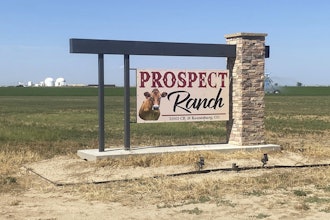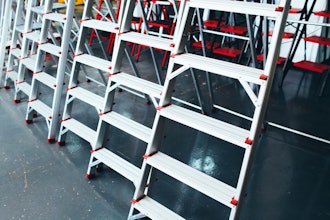
Meat processing is the largest industry group in food and beverage manufacturing based on sales, value added and employment, with 26.2% of sales in 2021, according to the USDA ERS - Food and Beverage Manufacturing.
In recent years, however, there have been many documented fire incidents at meat processing plants across the globe, costing millions of dollars in damages in the U.S. alone. The causes can be quite varied, from electrical malfunction, equipment failure and overheating machinery to the combustion of animal fats, oils and other flammable materials. In the event of a fire, the meat processing plant can suffer costly, lengthy production downtime and often cannot reopen for an extended period due to extensive property damage and remediation measures.
Unfortunately, processors that butcher and package meat face unique fire protection challenges due to the nature of the working environment. These factors – namely the presence of smoke, steam, dust, particulates, oil and water vapor – result not only from the butchering, rendering and packaging of high-fat content animal proteins, but also from lubricants and hydraulic oil droplets, exhaust and regular sanitary washdowns. This environmental “haze” wreaks havoc on standard smoke detectors, often causing them to fail, alarm excessively or require excessive maintenance.
 Proactive meat processors are utilizing and tailoring industrial-grade fire protection systems such as VESDA, to maintain efficient operations with minimal false alarms and maintenance.Honeywell
Proactive meat processors are utilizing and tailoring industrial-grade fire protection systems such as VESDA, to maintain efficient operations with minimal false alarms and maintenance.Honeywell
“The challenge is finding a means to quickly and accurately distinguish between smoke from an actual fire and the typical airborne particulates in the background during meat processing,” said Jim Deakin, a fire alarm engineering technologist at API Systems Integrators, which provides complete life safety systems and is part of Western States Fire Protection.
Now, proactive meat processors are utilizing and tailoring industrial-grade fire protection systems such as VESDA, to maintain efficient operations with minimal false alarms and maintenance.
Implementing VESDA systems, the sensitivity of the fire detection equipment can be fine-tuned to reliably distinguish between smoke from an actual fire and other factors regularly found in the background air. This not only increases the safety of personnel but also protects the plant, production equipment, inventory and other assets while facilitating fire safety compliance.
Resolving a Smoke Detection Challenge
When a meat processing plant in the U.S. sought to add reliable smoke detectors to three refrigerated vacuum pump rooms at the request of its fire insurance company, it faced a difficult task. In the three rooms, pumps used to vacuum seal meat products for distribution were creating an environmental hazard.
“The exhaust was intermingling with water vapor from washdowns in a manner that could hinder the operation of traditional fire detection devices. In addition, there was a visible accumulation of lubricant residue on nearby surfaces near the vacuum exhaust,” said Deakin. “It was clear that traditional smoke detectors would not function properly in this environment.”
 A VESDA system like that from Honeywell will determine when smoke contamination from a fire exceeds the atmospheric reference and then activate the building’s fire alarm.Honeywell
A VESDA system like that from Honeywell will determine when smoke contamination from a fire exceeds the atmospheric reference and then activate the building’s fire alarm.Honeywell
To minimize potential losses due to unwanted alarms and provide the best possible long-term detection system, Deakin proposed a solution that involved installing two complementary VESDA smoke detection systems from Honeywell in each room, in what would be a performance-based application.
As an International Code Council (ICC) accepted alternative, performance-based design allows “alternate materials and methods” that offer equivalent or superior fire safety performance. With this approach, processors can consider a design acceptable if the fire engineering analysis demonstrates that it meets the measurable performance criteria set at the start of the process.
The risk insurer and meat processor sought a fire detection system that was fully compliant with NFPA 61- Standard for the Prevention of Fires and Dust Explosions in Agricultural and Food Processing Facilities.
“One VESDA system [the VLI] will provide an atmospheric reference in each vacuum pump room, minimizing unwanted alarms. A second VESDA system [the VLI] will determine when smoke contamination from a fire exceeds the atmospheric reference and then activate the building’s fire alarm,” said Khaleel Rehman, director of development for the advanced detection team at Honeywell.
According to Rehman, a VESDA VLI system utilizes a piping network to draw in air from the protected area to a central location, which facilitates smoke detector reliability and reduces potential contamination.
With more detailed information to analyze, installers can program the unit to differentiate smoke from other factors that could cause disruptive false alarms. In meat processing plants, airborne dust and particles may be present which can confuse some systems that incorrectly register them as smoke. In response, the unit’s dust rejection and data analytics minimize nuisance alarms by at least three times, compared to similar technologies.
The detector’s high-sensitivity chambers and cumulative sampling can deliver one of the earliest possible fire warnings. The detector combines an intelligent filter with an advanced clean-air barrier for optics protection, providing a long detection chamber life without the need for recalibration.
 The meat processing plant chose a piping network that draws in air from the protected area to a central location.Honeywell
The meat processing plant chose a piping network that draws in air from the protected area to a central location.Honeywell
In the second layer of VESDA smoke detection, a VLI unit integrates in an interdependent, cross-zone fashion with the VLI. With this configuration, the VLI determines when smoke contamination from a fire exceeds the initial atmospheric reference. When it does, the unit activates the fire alarm system. The VLI is designed to provide consistent performance throughout its service life, with a technology that uses a clean air barrier to keep its optical detection chamber components clean.
In addition, a user-initiated feature helps to prevent nuisance alarms by introducing clean air into the detection chamber and taking a reference reading of the chamber background. This reading is then offset against the actual environmental background to maintain consistent, absolute smoke detection.
Used together, the two VESDA smoke detection systems enable meat processors to set alarm thresholds above specific site background contamination levels as a further safeguard against nuisance alarms.
“To improve reliability, we implemented performance-based system design and testing because the background smoke and obscuration levels were continually high. Once the level of sensitivity is set, the system can automatically accommodate for almost any environmental condition,” said Rehman.
After Deakin provided a log of the system’s action alerts in the room with the vacuum pumps, Rehman compared these with the background levels of smoke and particulates obscuration, and manually adjusted the alarm sensitivity to compensate. The system’s “auto learn mode” now provides the ability to periodically adjust alarm sensitivity as needed.
“To mitigate fire risk and minimize false alarms, we deployed a meticulously engineered solution capable of discriminating between the smoke from an actual fire and the typical airborne oil and smoke particulates in the background. To assist in the process, this meat packing plant has three S3 Gamewell FCI Fire Alarm Panels – non-networked and connected to a VESDA Detector for 24/7 monitoring purposes,” said Deakin of API Systems Integrators.
“Most of the VESDA units are now set for a level of obscuration of approximately 6%, which is almost double the level that typical smoke detectors can tolerate. Most other traditional technology would have an excessive number of nuisance alarms at those levels of obscuration,” added Deakin.
To further enhance smoke detector reliability, Honeywell is providing a pipe cleaning system designed to blow air and debris out of the VESDA piping network and sample ports. The system minimizes any potential contamination inside the sampling network.
According to Rehman, after successful testing and installation, the fire insurance company that originally initiated the project was happy with the results. With the integrated VESDA smoke detection, the plant is also on track to significantly improve its fire safety for many years to come.
“Although the dual layer VESDA smoke detection system was used in a meat processor’s refrigerated vacuum pump rooms in this application, the same approach can be used in many other areas that can be prone to fire risk, atmospheric particulates and false alarms,” concluded Rehman.






















